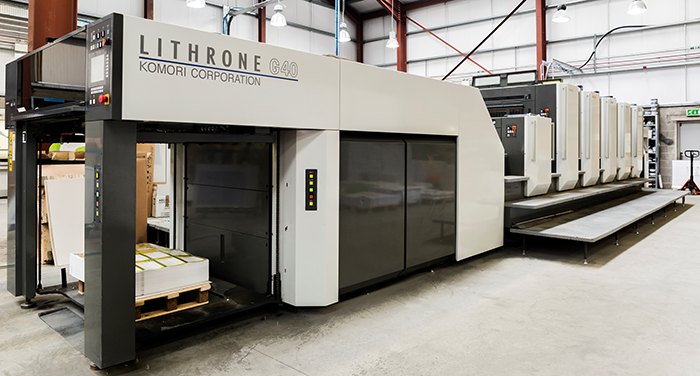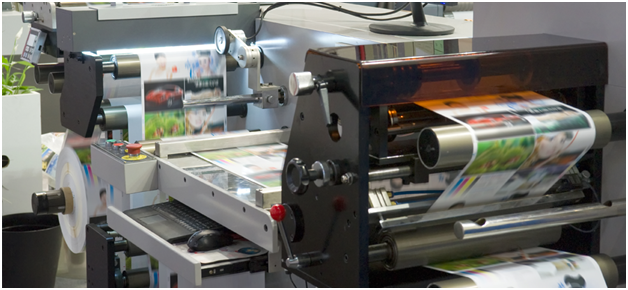Case Studies: How Businesses Succeed with litho printing Solutions
Wiki Article
The Important Overview to Understanding Litho Printing and Its Applications
Litho printing stands as a substantial technique in the printing market, rooted in the concepts of oil and water repulsion. This strategy not only delivers premium photos however also deals with different business needs. Its applications vary from marketing products to packaging, showcasing its flexibility. As the market adapts to new innovations, the development of litho printing elevates inquiries about its future and relevance in a digital landscape. What exists in advance for this withstanding approach?
What Is Litho Printing?
Litho printing, an extensively made use of printing technique, counts on the concept of oil and water repulsion. This technique employs a flat printing surface, generally a steel plate, which is treated to guarantee that the photo locations are receptive to oil-based inks while the non-image locations repel them. The process begins with the production of a picture on the plate, usually with illustration or photographic ways. When the photo is prepared, the plate is moistened with water, followed by the application of ink. The ink sticks only to the photo areas, permitting exact recreation of graphics and text. Litho printing is preferred for its ability to produce premium prints with great detail and vibrant shades. It is typically used in business applications, consisting of newspapers, publications, and product packaging, showcasing its convenience and performance in meeting the needs of modern-day printing.The Background of Lithography
Although lithography is a contemporary printing staple, its beginnings map back to the late 18th century when German playwright Alois Senefelder created the method in 1796. Originally developed as a technique for replicating messages and photos, lithography used a flat stone surface to create prints through a chemical procedure. Senefelder's technology enabled higher flexibility and creative expression contrasted to previous printing methods.By the 19th century, lithography gained widespread acceptance, ending up being a popular choice amongst artists and publishers. It allowed the mass production of illustrations, maps, and posters, especially impacting the printing sector. The strategy further evolved with the intro of lithographic presses, boosting performance and quality.As the industrial transformation progressed, lithography adjusted to meet the demands of industrial printing, leading the way for contemporary applications. Today, it remains a necessary strategy in numerous industries, including publishing, product packaging, and art reproduction.Just How Litho Printing Functions
An essential attribute of litho printing is its reliance on the principle of oil and water repulsion - litho printing. In this procedure, images are transferred from a flat surface area, normally a metal or polymer plate, to paper. Home plate is treated to make sure that the locations meant for printing attract ink, while the non-image locations repel it due to their affinity for water. The printing starts by dampening the plate with water, which sticks to the non-image areas. Ultimately, an oil-based ink is used, sticking just to the intended picture areas.When the plate enters into contact with the substratum, the ink is moved, creating a print. The litho printing process is qualified of creating top quality photos with fine detail. It is typically used for automation as a result of its effectiveness and consistency, making it a favored technique for commercial printing applicationsBenefits of Litho Printing
One noteworthy advantage of litho printing is its ability to generate top notch images consistently, making it an optimal option for industrial tasks. This printing approach makes use of a flat printing plate, guaranteeing even ink distribution and sharp details. Litho printing is also renowned for its shade precision, enabling vibrant and true-to-life reproductions, which is necessary for branding materials.Moreover, it sustains a broad variety of substrates, consisting of paper, cardboard, and even particular plastics, boosting its convenience. The process is economical for huge runs, as economic climates of range reduce per-unit costs. Furthermore, litho printing has a fast turn-around time, permitting effective production schedules.Its longevity likewise means that published materials resist fading, making certain that the final item preserves its aesthetic appeal in time. Generally, these benefits make litho printing a recommended choice across different markets, adding to its long-lasting appeal.
Applications of Litho Printing in Service
As services significantly seek dependable and high-grade printing solutions, litho printing becomes a principal in different applications. This method is particularly favored for producing advertising and marketing products such as brochures, flyers, and brochures, many thanks to its capability to supply vivid colors and sharp pictures. In enhancement, litho printing is frequently employed for packaging solutions, permitting firms to produce captivating labels and boxes that enhance product appeal.In the sector of business identification, litho printing is instrumental in creating specialist stationery, calling card, and marketing goods, which assist enhance brand recognition. Additionally, it is commonly utilized in the publishing market for printed products such as publications and publications, where regular top quality is extremely important. Generally, litho printing's adaptability and performance make it an important tool for companies aiming to communicate effectively and develop a solid market existence.Artistic Uses of Litho Printing
Litho printing functions as a versatile tool in the domain of printmaking, offering musicians a distinct approach to share their imagination. This technique enables a variety of creative applications, from standard prints to contemporary analyses. By exploring the subtleties of litho printing, musicians can harness its distinctive high qualities to boost their job.
Printmaking Techniques Summary
The creativity of printmaking encompasses a diverse array of methods, with litho printing standing apart for its one-of-a-kind approach to picture creation. This approach counts on the concept of oil and water repulsion, allowing musicians to draw directly onto a limestone or steel plate with a greasy medium. Once prepared, the plate is this website moistened and tattooed, moving the picture onto paper via stress. Litho printing is commemorated for its ability to produce fine details and abundant tonal variations, making it a preferred choice among artists. Furthermore, the procedure is functional, fitting both traditional strategies and modern adjustments. This flexibility allows litho printing to bridge different artistic styles, improving the printmaking landscape with its unique attributes and abilities.Unique Artistic Applications
Exploring the one-of-a-kind artistic applications of litho printing reveals its amazing flexibility in different imaginative fields. Artists utilize litho printing to produce complex layouts and textures, permitting for meaningful and in-depth jobs. The process assists in the recreation of dazzling colors, making it optimal for images and art prints. Numerous modern musicians embrace lithography for its capability to incorporate standard techniques with contemporary concepts, resulting in cutting-edge artwork. Additionally, litho printing is often used in the production of restricted version prints, boosting their worth and appeal. The tactile top quality of litho prints includes a distinctive dimension, attracting collection agencies and art fanatics alike. In general, litho printing stays a considerable medium for creative expression, connecting classic approaches with contemporary creative thinking.The Future of Litho Printing in a Digital World
As the printing market evolves, litho printing deals with the difficulty of incorporating electronic innovations to continue to be appropriate. Methods concentrated on electronic assimilation, alongside fads in sustainability and innovation, will form its future - litho printing. Understanding these dynamics is important for market stakeholders aiming to adjust to a quickly transforming landscapeDigital Combination Approaches
A growing variety of litho printing firms are embracing digital assimilation techniques to remain competitive in a progressively digital landscape. By incorporating electronic workflows, these firms can enhance procedures and boost effectiveness. This assimilation permits real-time data monitoring and boosted interaction between divisions, minimizing turnaround times noticeably. Additionally, electronic devices make it possible for better personalization and personalization of printed products, satisfying specific client needs. Firms are likewise taking on hybrid printing options that incorporate typical litho methods with electronic technologies, offering flexibility in production. Leveraging information analytics aids in comprehending market trends and client choices, enabling companies to make enlightened choices. Generally, electronic assimilation is ending up being important for litho printing firms intending to introduce and reply to developing market needs.Sustainability and Technology Patterns

Often Asked Concerns
What Products Are Typically Made Use Of in Litho Printing?
The materials commonly used in litho printing include aluminum plates, ink, water, and paper. Each part plays a vital function in the printing procedure, making certain premium photo recreation and reliable transfer of ink onto the substratum.Exactly How Does Litho Printing Compare to Digital Printing?
Litho printing uses premium shade consistency and quality for big runs, while electronic printing masters short runs and modification. Each technique has distinctive benefits, catering to various requirements based Read Full Report on manufacturing scale and cost-efficiency.What Is the Normal Turnaround Time for Litho Printing Projects?
The typical turnaround time for litho printing tasks differs, normally varying from a couple of days to a number of weeks. Aspects influencing this timeframe consist of job complexity, quantity, and required completing procedures, impacting general production timetables.Can Litho Printing Accommodate Custom-made Sizes and Formats?
Litho printing can indeed suit customized dimensions and formats, enabling versatility in design. This versatility enables customers to check my blog accomplish one-of-a-kind print results customized to their specific requirements, enhancing the general performance of their projects.What Are the Ecological Influences of Litho Printing?
The ecological impacts of litho printing consist of resource intake, chemical usage, and waste generation. Improvements in sustainable practices and eco-friendly products are slowly reducing these adverse impacts, promoting a much more environmentally responsible technique to printing.Report this wiki page